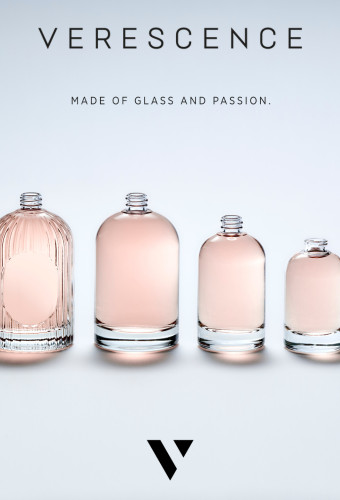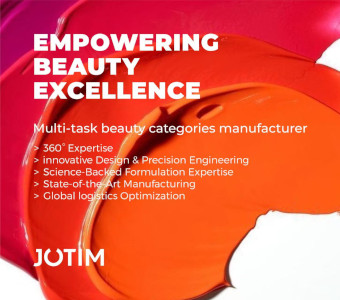
The interest of the CEP Group in the segment of cosmetic packaging actually started in 1990, when Géry Dambricourt, owner and CEO of CEP for only five years, decided to acquire a unit specializing in the manufacture of capsules. The company, which developed at the time the famous bi-injected capsule for Vichy’s face care range in jars (Liftactiv-Neovadiol). In 1993, the first research work was carried out on the manufacture of an injected tube. The same year, a brand new factory dedicated to the cosmetic packaging activity was built in Thiers.
A series of Innovations
The CEP Group currently consists of three distinct entities, CEP Cosmétique (with the CEP Industrie and the CEP Tubes entities), CEP Agriculture (injected products for gardening and/or agriculture) and CEP Office Solutions (storage accessories for office use). Total turnover, 29 million euros for a staff of 210.
The factory of CEP Cosmétique, located in Thiers, in the Auvergne region, owns thirty injection presses, including four bi-injection presses and several “in-house processes” for the assembling and decoration of capsules, not to mention three offset printing machines, two screen printing machines dedicated to the decoration of tubes with a diameter of 16 and 19, and an impressive “in-house-designed” line dedicated to the screen printing and hot stamping of tubes with diameters of 30 and 35.
Latest innovations of the past two years include: atwo-piece mini-mascara/sample, and the “Minicep” a new single material breakable tube/sample, which is resealable and claims to be as competitive as a sachet. And finally a new HDPE injected tube, and no longer with linear LDPE, developed in 2010 and marketed in 2011, and which has the advantage of offering exactly the same properties as extruded tubes in terms of flexibility and barrier properties.

Plastitube: an opportunity for CEP
“As soon as the Soupletube Group started stating last March, that it would separate itself from the Plastitube factory, we rapidly got interested in it and built a project after several site visits,” detailed officials at the CEP. “The decision to take over the Plastitube factory was not easy: this plant had cruelly been lacking industrial investments in recent years to adapt to global competition in the area of the production of tubes, and we had to undertake an in-depth restructuring of the company to start on good bases. But on the other hand, this tool does exist and many professional skills are attached to it.”
Managers at the CEP believe that development prospects are real. Firstly, there is a perfect complementary in the Tube supply between the CEP’s injected range and the range of extruded tubes at the Bayonne factory. CEP is now in a position to offer a complete range of tubes, ranging from Ø16 to Ø56, in all lengths, with an offset, screen printed, MAC or labelled decoration, in mono-extrusion and co-extrusion, and with different cappings. The respective client portfolios are complementary, and that was a good surprise too.
Our first challenge was to reconfigure the organization of production to be able to produce the same number of tubes as before. Indeed, CEP has acquired 100% of Plastitube’s customers, markets and commitments. A month later, this first challenge has been successfully met, even if the schedule will remain tight until the end of August. To support this reorganization, we will make some investments, as of this fall, to automate a number of tasks and standardize the production lines.
The aim of CEP is to constantly provide real breakthrough innovations in the tube area. The technical limitations of the injected tube were impeding us, and we are now going to be able to make great strides in some areas, by bringing together the extrusion skills of the teams in Bayonne and the know-how in injection of the CEP at Thiers. Our first three main axes are: provide solutions on issues regarding barrier properties and preservation following the gradual phasing out of preservatives; offer innovative and competitive solutions in the delivery/restitution of creams (interaction between the skirt and the head of the tube); propose alternative materials, in particular bio-based ones.



































